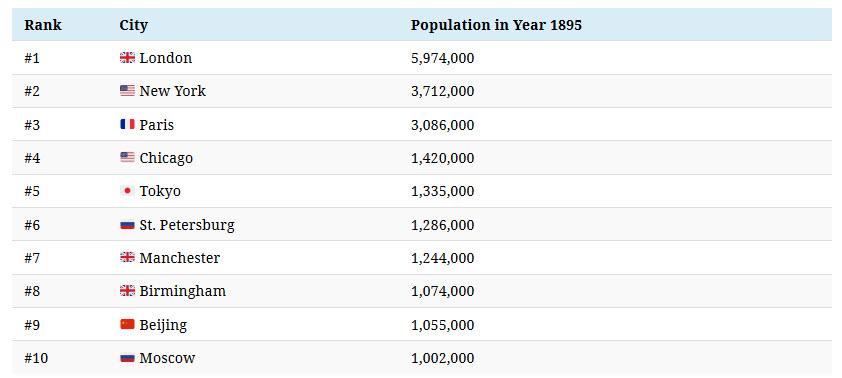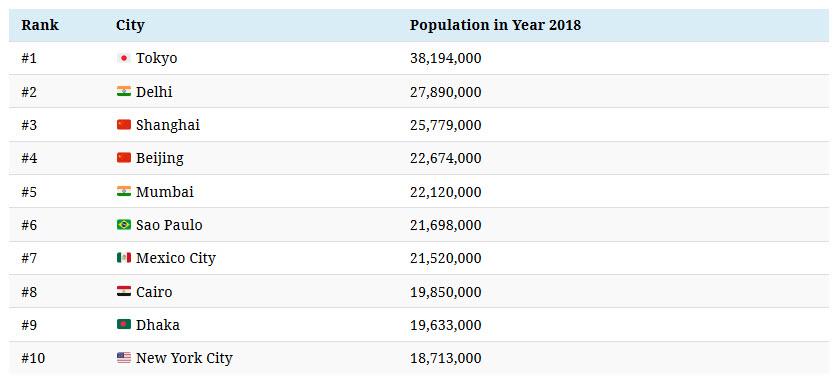Submitted by Jeff Desjardins of Visual Capitalist,
What do Beijing, Tokyo, Istanbul, London, and New York City all have in common?
Not only are they all world-class cities that still serve as global hubs of commerce, but these cities also share a relatively rare and important historical designation.
At specific points in history, each of these cities outranked all others on the planet in terms of population, granting them the exclusive title as the single most populated city globally.
Ranking the World’s Most Populous Cities
Today’s animation comes to us from John Burn-Murdoch with the Financial Times, and it visualizes cities ranked by population in a bar chart race over the course of a 500-year timeframe.
Beijing starts in the lead in the year 1500, with a population of 672,000:
In the 16th century, which is where the animation starts, cities in China and India were dominant in terms of population.
In China, the cities of Beijing, Hangzhou, Guangzhou, and Nanjing all made the top 10 list, while India itself held two of the most populous cities at the time, Vijayanagar and Gauda.
If the latter two names sound unfamiliar, that’s because they were key historical locations in the Vijayanagara and Bengal Empires respectively, but neither are the sites of modern-day cities.
The 1 Million Mark
For the first minute of animation—and up until the late 18th century—not a single city was able to eclipse the 1 million person mark.
However, thanks to the Industrial Revolution, the floodgates opened up. With more efficient agricultural practices, better sanitation, and other technological improvements, cities were able to support bigger populations.
Here’s a look at the biggest cities in the year 1895:
In the span of roughly a century, all of the world’s biggest cities were able to pass the 1 million mark, making it no longer a particularly exclusive milestone.
Modern City Populations
Finally, let’s look at the modern list of the top 10 most populous cities, and see how it compares to rankings from previous years:
Interestingly, the modern list appears to be a blend of both previous rankings from the years 1500 and 1895, listed above.
In 2018, cities from China and India feature prominently, but New York City and Tokyo are also included. Meanwhile, Latin America has entered the fold with entries from Mexico and Brazil.
The Future of Megacities
If you think the modern list of the most populous cities is impressive, check out how the world’s megacities are expected to develop as we move towards the end of the 21st century.
via ZeroHedge News https://ift.tt/2GsXCOx Tyler Durden


